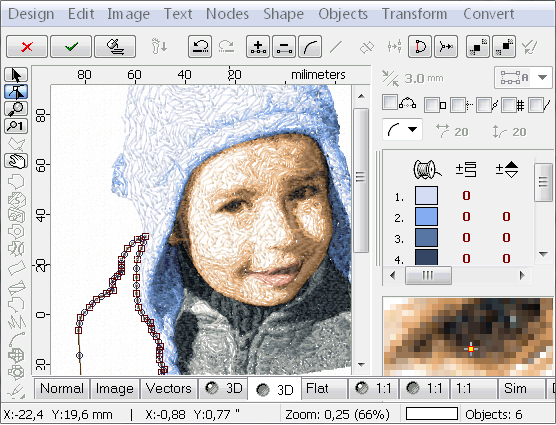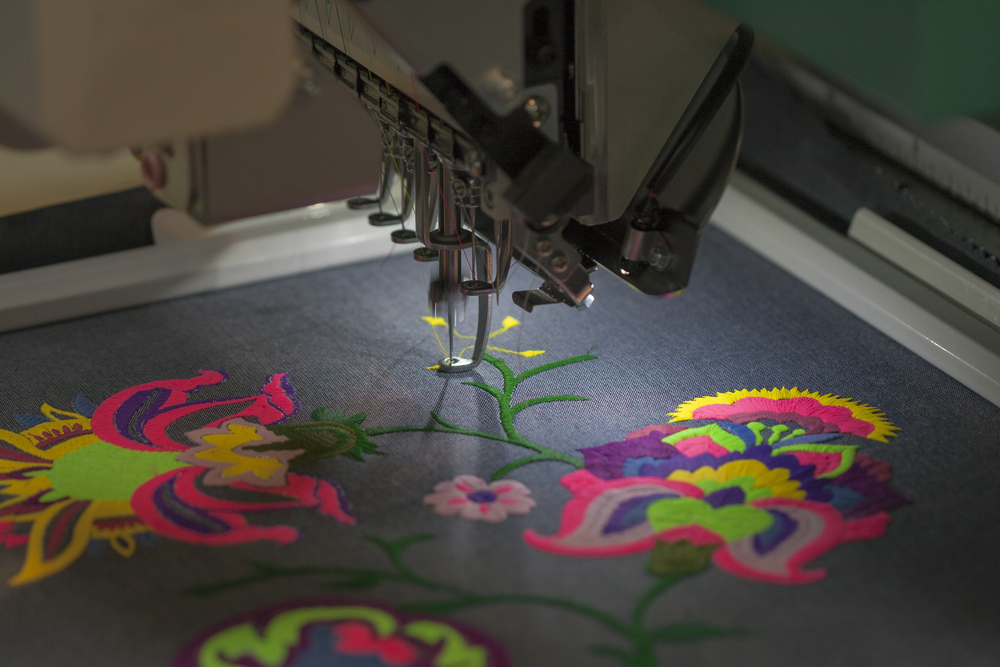Understanding the Embroidery Digitizing Refine: Your Ultimate Overview
Embroidery digitizing is a meticulous craft that requires accuracy and know-how to translate elaborate layouts into digital formats for equipment needlework. As artisans embark on this trip to grasp the needlework digitizing procedure, a thorough understanding of the essentials sets the foundation for quality.

Recognizing Embroidery Digitizing Basics
Embroidery digitizing basics develop the structure whereupon elaborate layouts are converted right into machine-readable layouts for accurate stitching. This initial action in the embroidery digitizing procedure is vital for guaranteeing that the last embroidered product is a loyal depiction of the initial layout. Understanding embroidery digitizing essentials entails grasping vital ideas such as stitch types, sew direction, density, underlay, and pull compensation.
Sew types play a crucial function in figuring out the aesthetic and textural outcome of the embroidered layout. By picking the appropriate stitch type, whether it be satin, fill, or running stitch, digitizers can accomplish the wanted effect and enhance the overall quality of the embroidery. Furthermore, stitch direction influences the flow and dimension of the layout, while thickness figures out the spacing and insurance coverage of the stitches.
In addition, rug stitching supplies stability to the layout by safeguarding the material and avoiding distortion throughout the needlework process. Draw compensation is another vital factor to consider to counteract the all-natural tendency of textile to contract when stitched. Mastering these embroidery digitizing essentials is fundamental for developing professional-quality stitched products.
Selecting the Right Digitizing Software Program
Selecting the proper digitizing software application is a crucial decision that considerably affects the effectiveness and high quality of the embroidery digitizing procedure. Digitizing for Embroidery. When selecting the ideal digitizing software, it is crucial to think about elements such as the complexity of styles you prepare to produce, the user-friendliness of the software application, the level of customer support provided, and the compatibility with your needlework machine
There are various digitizing software alternatives readily available out there, varying from basic programs for beginners to innovative software for expert digitizers. Some preferred selections include Wilcom EmbroideryStudio, Hatch Embroidery Software Program, and PulseID. These software plans provide a vast array of tools and features to aid you create detailed styles effortlessly.
Prior to choosing, it is suggested to discover the different software program choices via totally free tests or trials to figure out which one finest suits your requirements. Furthermore, reading testimonials and looking for referrals from experienced digitizers can offer useful understandings right into the strengths and weaknesses of each software program plan (Digitizing for Embroidery). By carefully reviewing your demands and contrasting the features of different digitizing software application, you can make an enlightened choice that improves your embroidery digitizing operations
Digitizing Devices and Techniques

Optimizing Style Setup for Needlework
Understanding the details of style settings is essential in achieving optimal lead to the embroidery digitizing procedure, building upon the structure laid by recognizing digitizing tools and methods. When maximizing layout setups for needlework, it is important to think about factors such as stitch kind, thickness, underlay, pull payment, and enrollment. Stitch kind selection affects the overall feel and look of the style, with alternatives like satin, fill, and running stitches providing different textures and effects. Thickness describes the spacing and thickness of stitches, impacting the design's protection and sturdiness. Correct padding sewing offers stability and avoids textile distortion, specifically for complicated styles or on stretchy materials. Pull compensation changes for material stretch during stitching, making sure accurate layout replication. Registration setups align various elements of the layout properly, keeping overall layout honesty. By fine-tuning these style settings, embroiderers can improve the top quality and accuracy of their stitched creations.

Troubleshooting Common Digitizing Issues
When experiencing common digitizing concerns during the embroidery process, it is necessary to comprehend the origin and apply efficient options immediately. One common problem is stitch density concerns, where stitches may be also thick, causing the textile to tighten, or as well sparse, leading to voids in the layout. Adjusting the stitch density settings in the digitizing software can aid fix this issue.
An additional frequent anchor challenge is thread breaks throughout the embroidery process. This can happen because of numerous factors such as incorrect stress setups, dull needles, or making use of low-grade string. Making sure proper maintenance of the needlework machine, consisting of normal needle adjustments and tension changes, can lessen the event of string breaks.
Moreover, layout registration mistakes can lead to misaligned elements within the embroidery layout. Inspecting the style placement in the digitizing software application and making essential modifications prior to stitching can aid in avoiding this issue. By addressing these common digitizing problems immediately and effectively, you can guarantee a smoother embroidery process and high-quality completed items.
Final Thought
In conclusion, mastering the embroidery digitizing procedure requires see a solid understanding of the basics, the right selection of software, and knowledge of devices and strategies. Enhancing style setups and troubleshooting typical digitizing concerns are crucial steps in making sure high-quality embroidery outcomes. By adhering to these steps faithfully, one can accomplish accuracy and efficiency in the digitizing process.